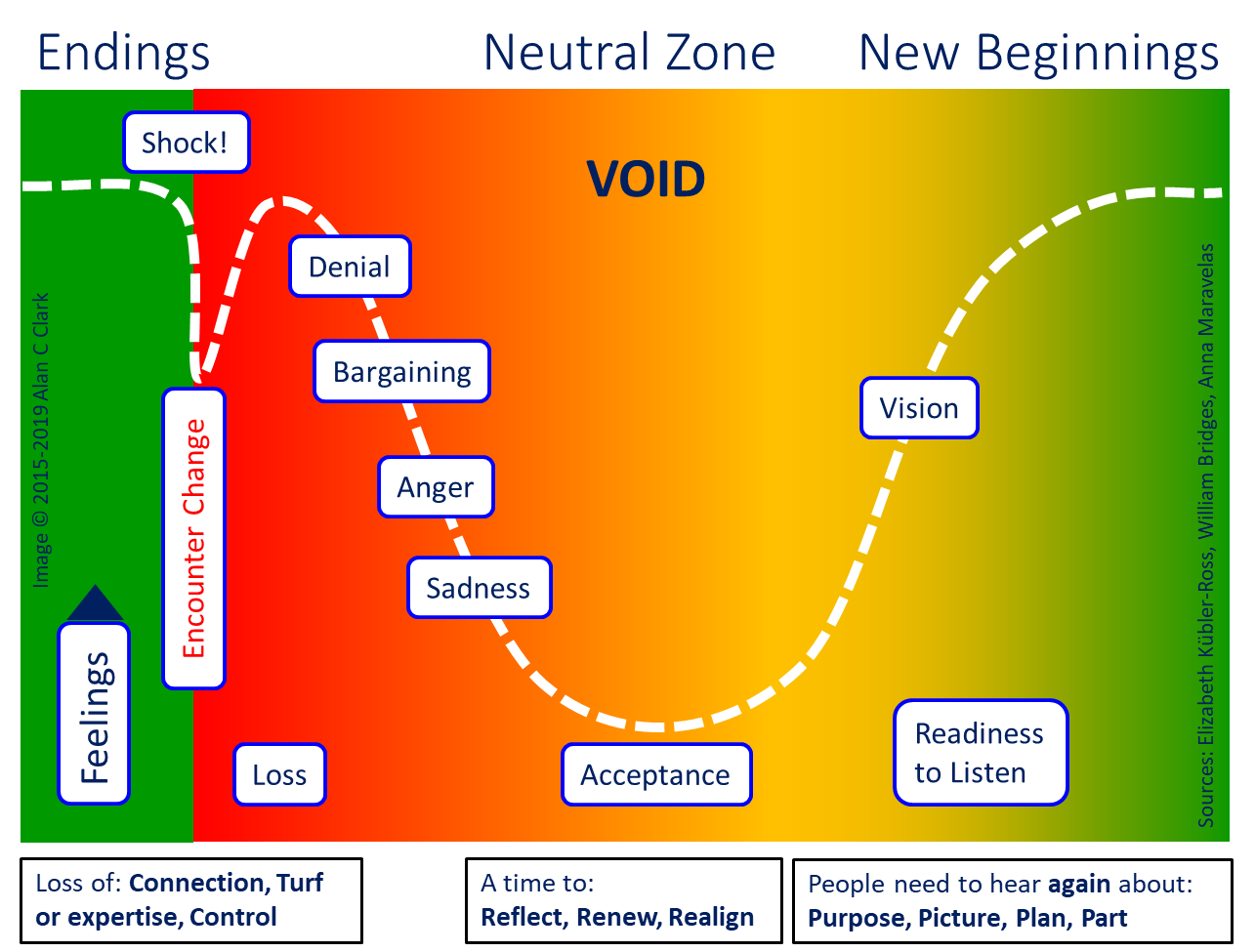In an ideal world change an organisation proceeds towards a vision of a better future by developing and working well-developed strategies and plans. However, when an organisation encounters unexpected change what might that mean for managing its people?
Expect the unexpected!
In a perfect world organisations progress towards some vision of an ideal future following carefully developed strategies and plans. Unfortunately in the real world today businesses and other organisations face complexity and ambiguity that make unexpected changes essential for survival.
When these influences make unexpected changes necessary they can have serious effects on the motivation and morale of people at all levels. As a result performance suffers despite the most well-developed strategies and plans being in place. By understanding what their people might feel managers can interact with them in a way that helps them adjust to the new situation.
When inevitably the unexpected happens how can a manager best support their people?
First let’s try to understand what people might be feeling. Back in 1969 Elisabeth Kübler-Ross proposed what has come to be known as the Grieving Cycle. This was inspired by her work with terminally ill patients. Kübler-Ross’s work was criticized for a lack of empirical evidence. However, as George Box once said, ‘All models are wrong, but some are useful.’ Later development of her work by William Bridges and Anna Maravelas suggests that the grieving cycle, as shown below, can be useful to managers dealing with change.
The Grieving Cycle
A manager can use this model to help them think about dealing with the situation as a journey. This starts from the shock of hearing about changes due to some unexpected situation. Next people may encounter various initial emotions, hopefully reaching acceptance of the situation. Eventually they would build back up to new beginnings where people are performing effectively in the new situation.
Experience suggests that all four emotions of denial, bargaining, anger and sadness may not necessarily take place or be in the order shown. At some point people may tell and even repeat ‘war stories’ of how minor difficulties were overcome in the past. Critically a manager needs to be present to listen and must never minimize the feelings being expressed. Saying something like ‘This is hard isn’t?’ recognizes people’s emotional difficulties. A time can come when people accept that change is happening and it is then time to restate the change and share the vision, ideally inspiring, of the new future everyone will be working towards.
In dealing with these situations it is useful for a manager to think of their approach as coaching. It is worth noting that as in one-to-one coaching, the models are there for guidance. If something is not working then something different should be tried. In the case of people not moving on perhaps involving them in clarifying the vision may help. When people are stuck at an early stage, hearing an inspiring vision of the new or revised future again may help them begin to come to terms with the change.
The key is to be present, to keep listening and recognizing people’s discomfort however tough that is for you as a manager. You may find it helpful to be supported either by senior colleagues or possibly an external coach.
In conclusion, in the world today it seems that having to deal with the unexpected change is inevitable. Many people in the workplace can struggle with this emotionally, reacting and behaving in unexpected ways that cause performance to drop. The grieving cycle can provide managers with insights into how their people may be feeling and act as a starting point to help people deal with those feelings. Coming to terms with the changed situation may require managers themselves to adapt. Ultimately by supporting people, possibly including taking a coaching approach, managers stand a better chance of returning performance to original or even better levels.
Postscript
There are a couple of implicit assumptions above. One is that strategies and plans are being developed with full involvement at all levels in the organisation, as in Strategy Deployment (or Hoshin Kanri) approach. The second is that having developed strategies and plans they are actually used and worked to. Sadly it is not unknown for strategies and plans to be developed and then filed with due ceremony without being acted upon until the next planning cycle begins. The danger in not working to strategies and plans is that unexpected events can have even greater impact on people at all levels than might otherwise be the case.
#Change #GrievingCycle

